This salinity profile was from an arctic deployment in rough seas. At a certain point, we see regular salinity spikes of about ± .01 psu in the upcast data. Can you determine what caused this?
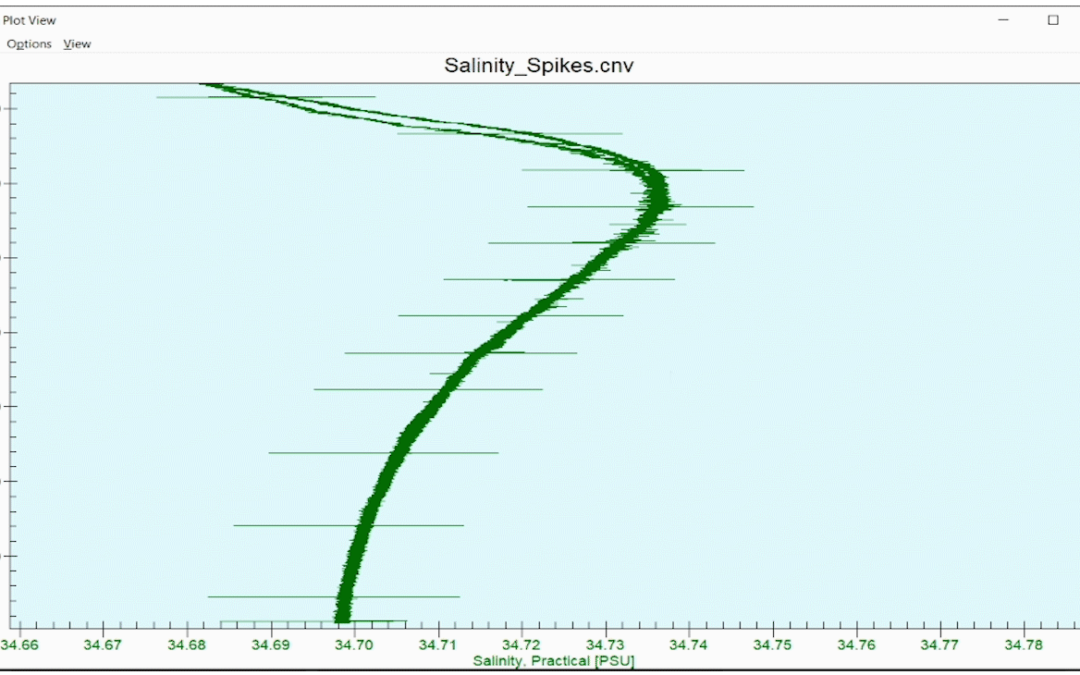

This salinity profile was from an arctic deployment in rough seas. At a certain point, we see regular salinity spikes of about ± .01 psu in the upcast data. Can you determine what caused this?
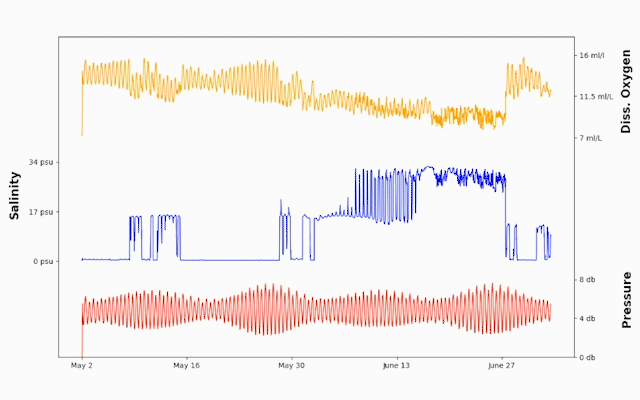
Zooming in shows salinity and dissolved oxygen are fluctuating heavily alongside the tidal cycle. Can you determine what is causing this?
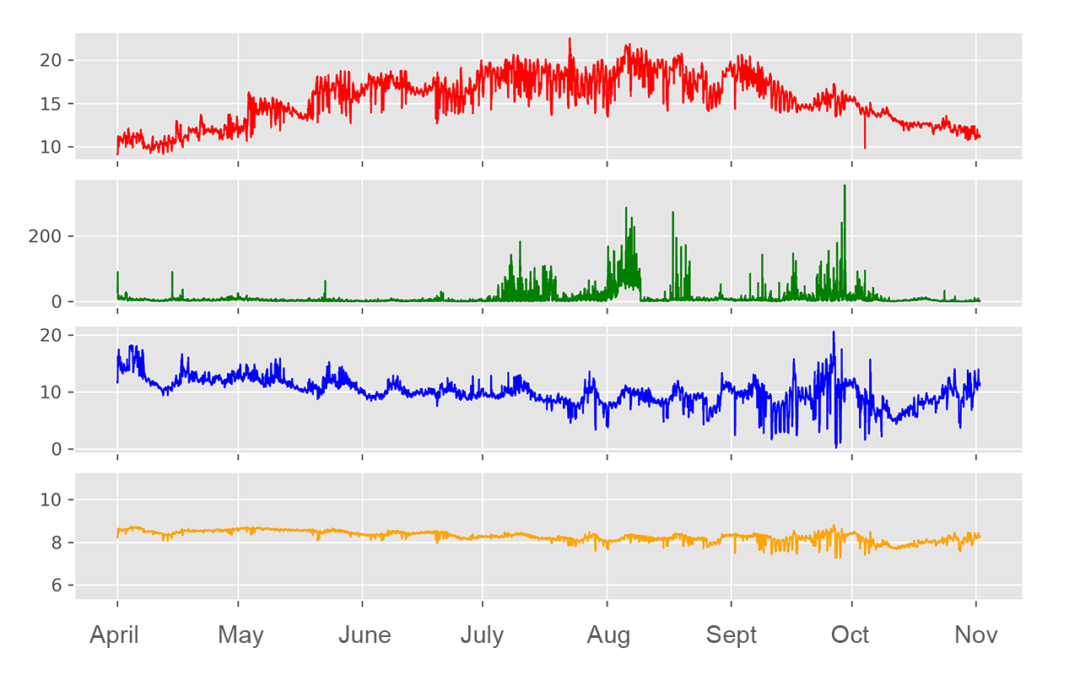
Can you correctly label the 4 plots? Hint: this area is subject to periods of eutrophication during the late summer/early fall.
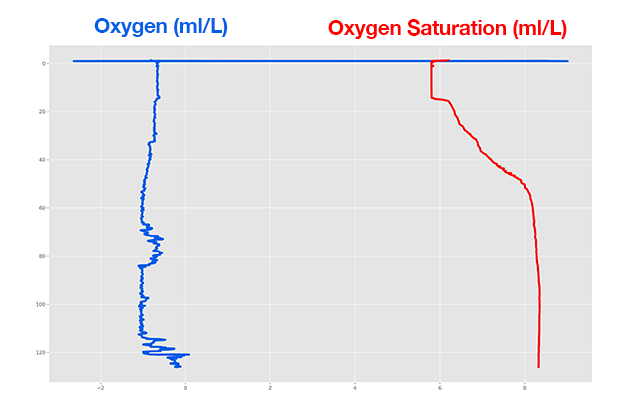
Dissolved oxygen should not be negative. Can you determine the error that created the unusual oxygen profile above?
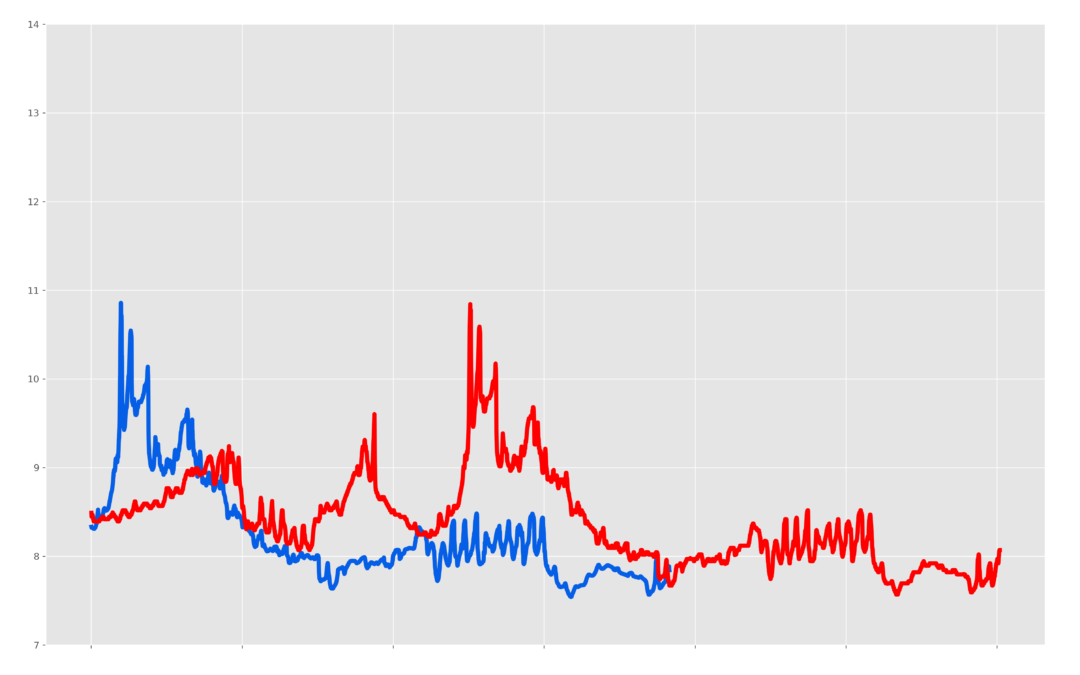
Although they should match perfectly, the two sensors rarely reported the same temperature value throughout their deployment. Furthermore, the 16plusV2 appeared to stop logging, although the batteries still had life upon recovery. Can you identify the problem?
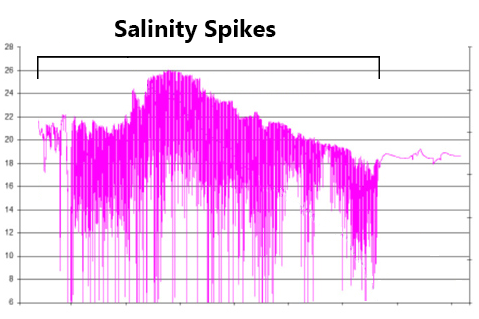
Q&A: Diagnosing Salinity Spikes The figure above shows a time series of salinity from a moored CTD. For most of the deployment, salinity showed frequent downward spikes, dropping from an expected range of 18-26 psu to near zero. Can you determine the cause?...
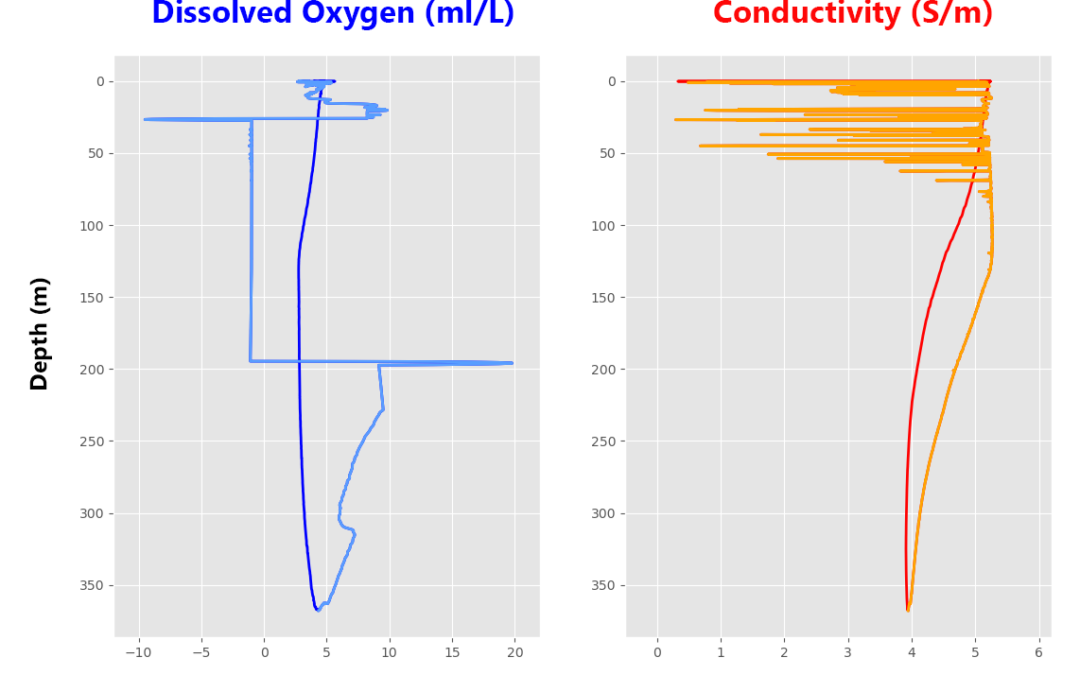
May 2020 Newsletter The data above show two major symptoms of the same problem occurring in different locations on a 19plusV2 profiling CTD. On the left, oxygen appears to drop below zero and is highly erratic during the downcast (light blue). However, once it hits a...
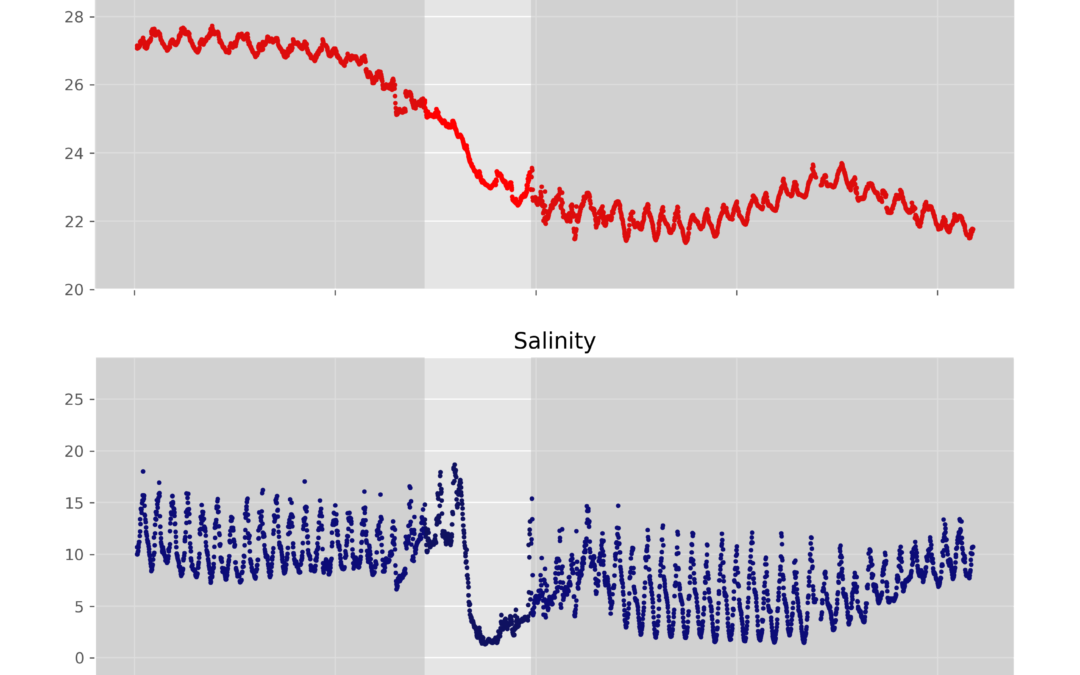
February 2020 Newsletter The data above came from a HydroCAT-EP multiparameter probe moored in an estuary near Savannah, Georgia. The highlighted section shows a sudden change in the temperature and salinity data that lasted for approximately 4 days, and continued...
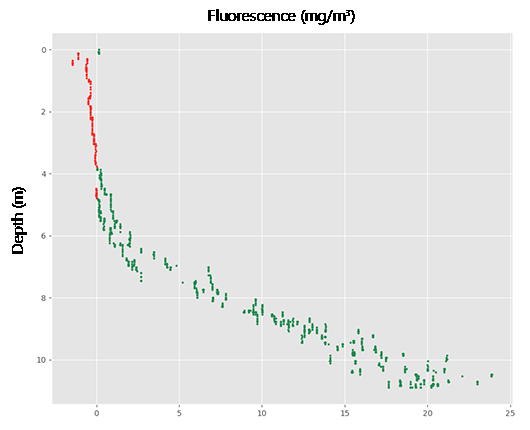
December 2019 Newsletter Fluorescence is the light emitted by a particle after excitation from another light source. Sea-Bird Scientific fluorometers are widely used to measure fluorescence from chlorophyll as a method of measuring primary productivity. The figure...
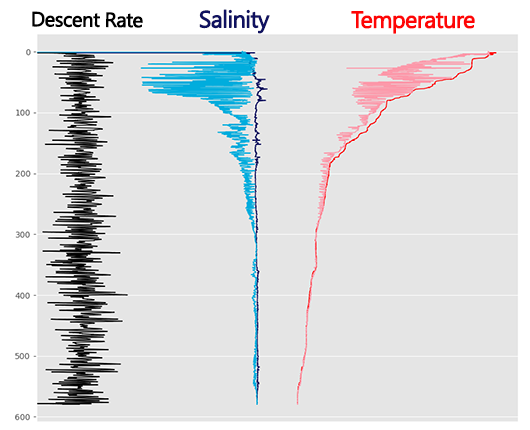
November 2019 Newsletter The data above come from a profiling CTD, deployed in sea conditions that caused approximately 1-meter ship heave. Two things stick out – relatively unchanging salinity data during the downcast, and noisy data during the upcast (shown in light...
Overview This highlight was developed in partnership with the British Antarctic Survey. Sea-Bird Scientific interviewed Peter Davis, Ph.D., co-PI of the MELT project, as part of the International Thwaites Glacier Collaboration at the British Antarctic Survey. Dr....
When service technician Jenn Wilson received an invitation from Schmidt Ocean Institute to join their 21-day expedition aboard Falkor (too), she knew it was a rare opportunity. She wasn’t just joining a crew - she was helping make history. The mission: to explore...
Overview This case study was developed in partnership with the University of Washington (UW) Ocean Technology Program. Sea-Bird Scientific partnered with Sasha Seroy, Ph.D. and a select group of students at UW to explore the use of the Deep SeapHOx™ V2 pH sensor in...